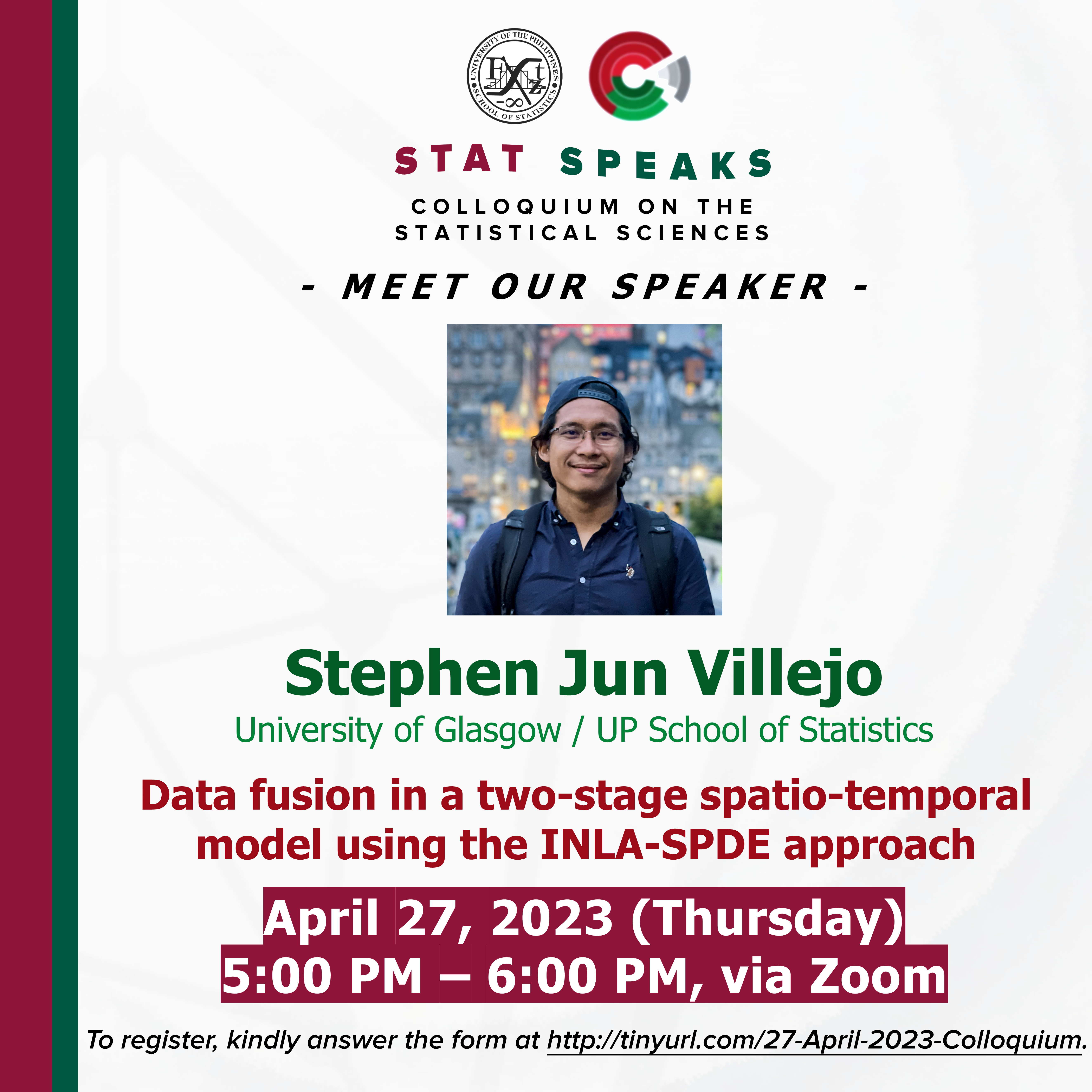Colloquium, Trainings, and Events
-

STAT SPEAKS
Last updated: April 18, 2023, 5:06 p.m.
Speaker: Stephen Jun Villejo
Date: April 27, 2023, 5 p.m.
Venue: via Zoom
Abstract: We propose a two-stage latent Gaussian model for a specific spatial misalignment problem. We use the integrated nested Laplace approximation (INLA) to perform inference. The first-stage model is based on the Bayesian melding which does data fusion by assuming a common latent field for the observed outcomes. We use the stochastic partial differential equations (SPDE) approach to efficiently estimate the spatial field. It induces a Markov structure on the field which leads to sparse precision matrices giving great computational gains. Uncertainty in the first stage is accounted for by simulating repeatedly from the posterior predictive distribution of the field. A simulation study was carried out to assess the impact of the sparsity of the data, the number of time points, and the specification of the priors in terms of the biases, RMSEs, and coverage probabilities. The results show that the parameters are generally estimated correctly, but there is difficulty in estimating the random field parameters. The method is applied to NO2 concentration and respiratory hospitalizations for the year 2017 in England. An increase in NO2 levels is significantly associated with an increase in the relative risks of the health outcome. Also, there is a strong spatial structure and a strong temporal autocorrelation in the risks.
You are invited to attend the colloquium to be held on April 27, 2023 (Thursday) via Zoom!
Data fusion in a two-stage spatio-temporal model using the INLA-SPDE approach
Stephen Jun V. Villejo
Asst. Professor, UP School of Statistics
5:00-6:00 PM
Kindly answer the form at tinyurl.com/27-April-2023-Colloquium to register.
Highlights
UP STAT Faculty calls out abuse in survey methodologies
OFFICIAL STATEMENT OF THE FACULTY OF UP SCHOOL OF STATISTICS on the Proliferation of Surveys with Unclear Methodologies We, the faculty members ...
View our Most Read Article
Employment Correlates of Multidimensional Poverty in the Philippines
One of the highlights of the 2015 UP School of Statistics Recognition Rites was the announcement of the recipients of the Best Undergraduate Student Paper Award.
View our most read journal
STAT SPEAKS: Colloquium on the Statistical Sciences
STAT SPEAKS: Colloquium on the Statistical Sciences
Date: April 11, 2024 5 PM
Speaker: Assoc. Prof. Francisco De Los Reyes
View our Recent Event